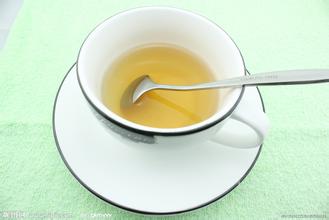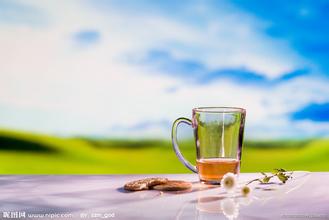Panamanian Coffee Bean Estate Flavor Taste Features Introduction of Elida Estate
Central America is a long isthmus from northern Mexico to southern Colombia, connecting North and South America. Panama is located in the southernmost part of Central America, so the country runs from east to west, not from north to south as people think. This means that the coast of the Caribbean (Atlantic) is in its north, while the Pacific is in the south.
Panama is by far the narrowest country that shares the Atlantic and Pacific coastlines. And this has a far-reaching impact on coffee production. In the coffee-producing area of Chiriqu í, the hometown of world-famous estates such as Hacienda La Esmeralda, Elida Estate, Finca Nuguo, and Finca La Mula, it is only 60-70 kilometers from the sea.
The oceanic climate is a huge system that covers the entire hemisphere. Other currents in the Caribbean originate as far away as Iceland, while some east-west currents in the Pacific Ocean originate half a world away off the coasts of Japan and Indonesia. On the island of Panama, which is less than 100 kilometers wide, these global climate systems intertwined and collided, creating amazing microclimate change. The wind swirled and changed direction; it rained without warning, and the clouds floated on the hills with fog and ice rain.
And the boutique coffee farms in Panama, in the middle of these chaotic climates.
The interaction between ● climate and environment creates a charming flavor.
Willem Boot, owner of two Panamanian farms Finca Sao í an and Finca La Mula, also grows Rosa Coffee, which is also an award-winning variety. In February 2015, I went to Finca La Mula Manor with the professional manager of Boot, along with my friend Kelly Hartmann, a Panamanian native. In summer in Panama, the climate from January to April is much drier than when I first visited Panama. But Boot reminds me that when you get to the farm, you will find that "dry" is only relative. "this is basically a forest in the clouds, and when the clouds come, the temperature will drop sharply." This is how Boot describes it. We climbed the steep hillside of the manor and passed through the thick clouds, which covered everything.
La Mula is a dense forest, with huge shade trees covering most of the planting area. There is also a second layer of shade trees that grow lower than them, and under this vault are rosy summer coffee trees that have a unique flavor because of the environment.
Boot told us: "if the cloud period is regular and becomes a regular phenomenon, it shows that it can cause some unique situations for trees." Especially in the presence of fruit trees, plants will respond to the environment and adjust themselves. When there is no sunlight, the leaves get a higher water supply, and the photosynthesis of the trees is slow, which lengthens the ripening period of cherries, making the flavor stronger, especially in terms of sweetness and acidity. " So will humidity make it more difficult to grow? "it doesn't matter," Boot said. "We want these unique things to happen, and that's what makes them unique."
The thick forest ensures that the clouds can last on the hillside. Under the combined action of trees and clouds, combined with high altitude, coffee can grow in a cool and humid environment.
Unique geographical location creates a unique flavor.
Finca Nuguo Manor is getting better and better on the world coffee stage, with the exception of some coffee that won senior competitions, where beans were used in the 2016 US barista champion Lemuel Butler competition. Finca Nuguo Manor is located in Chiriqu í in western Panama, close to the Costa Rican border.
"it's raining hard here, and even in the dry season, Rain Water continues to be here." Jos é Gallardo, the owner of Finca Nuguo, said, "I think these trees will love the rain, which means the nutrition will be good all year round." Water brings all the nutrients of the year to the root layer of the tree. "
In addition to the official rainy season, Finca Nuguo Manor also experienced an unusual rainfall (as did La Mula), which Panamanians call "bajareque". The rain was coming so fast from the Atlantic that I even saw clouds like waves covering a corner of the hillside. Standing on the top of the mountain, the second before it was covered by strong sunlight, you could see the clouds sliding slowly between the two slopes, like a blanket. Before you realize what happened, the next second you are already in the bajareque. The cold Rain Water is very small, just like a silver needle, the temperature plummets and almost tingles your skin. Bajareque has caused a lot of trouble for local farmers, but Finca Nuguo Manor's Jos é Gallardo told us: "in a tropical rainforest, trees love the rainy season. The trees in the dry areas are very similar, the leaves are scarce and the ground is dry. But in Nuguo, if you go into the jungle, you will find leaves everywhere. Everything is soft. "
Boot commented on this phenomenon: "this is a combination of several factors: unique forest climate, a lot of rainfall, cloud-shrouded forests." Because of this unique climate, we get a lot of planting materials, which create a very complex organic matter in the soil. Constant moisture helps these materials degrade, while hyperactive microbial bacteria create a special metabolism to help trees get nutrients. Higher elevations and cold weather conditions mean more complex oils in coffee. We can't measure this accurately, but we can taste it, and I've consulted botanists that the unique color of coffee, such as the unique reddish hue observed at Finca Nuguo Manor, is also related to these complex oils.

Important Notice :
前街咖啡 FrontStreet Coffee has moved to new addredd:
FrontStreet Coffee Address: 315,Donghua East Road,GuangZhou
Tel:020 38364473
- Prev

Introduction to the coffee flavor and taste area of Panama Caesar Louis Manor with thick and sour taste.
Panamanian coffee is famous for the rosy summer of the Emerald Manor, which is also famous in the Boquete region of its Chiriqui province. Poquet Boquete is a town of Chiriqui in the province of Riki. It is located near the border between Panama and Costa Rica, near the famous Baru Baru volcano.
- Next

Introduction to the characteristics of coffee flavor and taste in lemon tree manor in Nicaragua
The suitable climate provides an excellent growth environment for the cultivation of coffee. The mineral-rich pozzolanic soil provides abundant nutrients for the cultivation of coffee trees. High-quality Nicaraguan coffee is also grown in the northern and central highlands of the country. The best coffee is produced in Matagalpa (Matagalpa), which is highly respected by coffee lovers all over the world.
Related
- Does Rose Summer choose Blue, Green or Red? Detailed explanation of Rose Summer Coffee plots and Classification in Panamanian Jade Manor
- What is the difference between the origin, producing area, processing plant, cooperative and manor of coffee beans?
- How fine does the espresso powder fit? how to grind the espresso?
- Sca coffee roasting degree color card coffee roasting degree 8 roasting color values what do you mean?
- The practice of lattes: how to make lattes at home
- Introduction to Indonesian Fine Coffee beans-- Java Coffee producing area of Indonesian Arabica Coffee
- How much will the flavor of light and medium roasted rose summer be expressed? What baking level is rose summer suitable for?
- Introduction to the characteristics of washing, sun-drying or wet-planing coffee commonly used in Mantenin, Indonesia
- Price characteristics of Arabica Coffee Bean Starbucks introduction to Manning Coffee Bean Taste producing area Variety Manor
- What is the authentic Yega flavor? What are the flavor characteristics of the really excellent Yejasuffi coffee beans?

